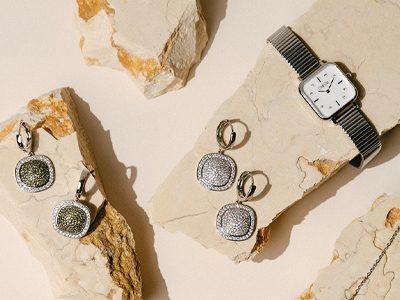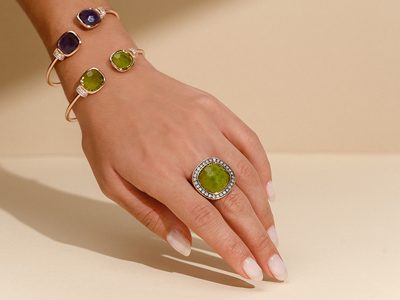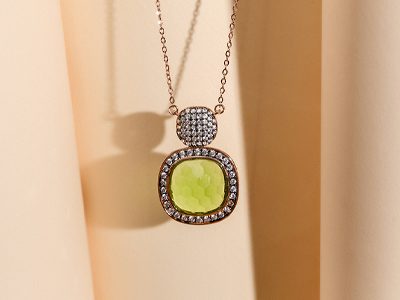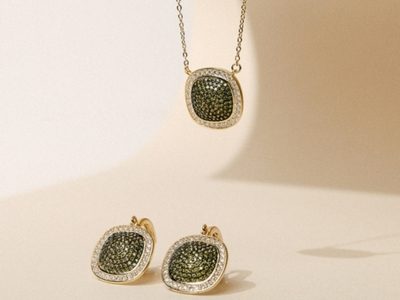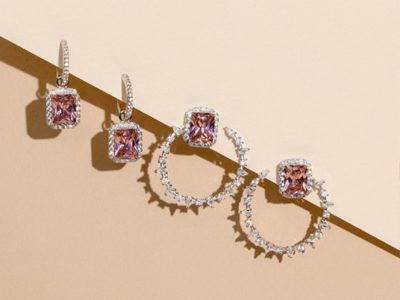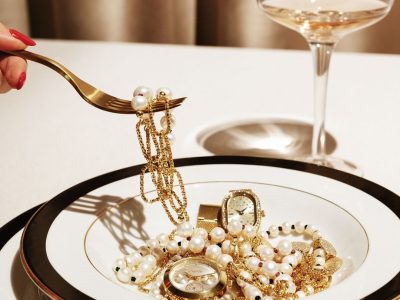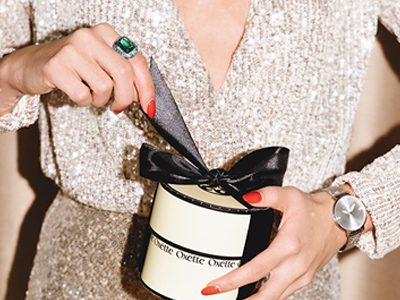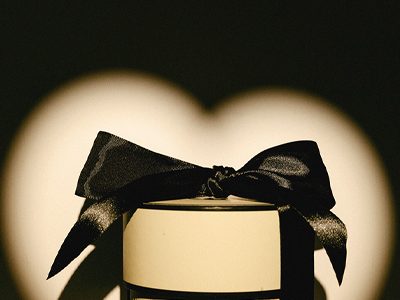MATERIALS
For its creations, OHETTE uses exclusively materials of excellent quality. He chooses the finest silver (925), rhodium-plated, nickel-free, for its dazzling brilliance and natural mineral stones, imported from all over the world, for their uniqueness. These materials tied in bold geometric patterns, with plastic and airy movement, are an ode to beauty and do not need special occasions to be worn. The majority of the collections are made with modern methods in the company's laboratory and a substantial part of them are made by hand.
Indicative Examples
Semiprecious Stones: Gemstone the naturally formed crystalline form of a mineral that is desired for its natural beauty, value according to its rarity, and strength to withstand more than brave. Gemstones are among nature's most miraculous creations: perfect crystals, without equal. Some varieties of gemstones have been discovered before history was even written while others have been discovered recently. There are over 30 popular items and many collectors. Some varieties also have a wide range of colors.
The Rainbow Of Precious Stones: Gemstones are the most intensely colored naturally colored materials on earth. Stones have become synonymous with colors, even lending their names to the colors themselves. We all know ruby red, aquamarine, turquoise and jade green, but the world of gemstones today has an even greater variety of colors that reflect all the colors of the Rainbow. The huge variety of stones used in OXETTE's creations cover every style and personality.
Mineral Stones: To name a stone a mineral it should be:
- Solid
- Crystalline
- Inorganic
- Homogeneous
- Naturally Created
Agate:
It is a variety of chalcedony (quartz). It is created from successive layers of chalcedony, each of which has a different color. It is a very common mineral, and is found in almost all colors. It is usually found in an opaque form. Onyx is also agate.
Amethyst:
Amethyst is a violet (violet or purple) variant of the mineral quartz and is used for decorative purposes as a gemstone. Amethyst is found in all shades from light, slightly pink, violet to dark purple the color of black grapes. There may also be secondary red and/or blue undertones. Amethyst was used as a gemstone by the ancient Egyptians and other ancient peoples. In earlier times it was used more than today for the manufacture of art objects.
Aquamarine:
It is a transparent blue or bluish-green mineral that got its name from its color. Aqua Marina means beach water in Italian. Chemically it belongs to the beryllium family. It is today one of the most sought-after jewelry materials. Its most popular form is blue aquamarine, so in laboratories they turn blue-green into blue, with heat treatment. The shade obtained after heat treatment is very stable (does not discolour). The usual treatment that aquamarine undergoes is tanning. More rarely, it is treated as a caboose.
Citrine:
Yellow is a form of quartz, i.e. silicon dioxide. It has almost the same composition as amethyst, except that it contains more iron impurities. It is translucent or transparent with a beautiful lemon color that sometimes ranges in hue towards reddish or pale yellow. The word "citrine" comes from the French "citron" meaning "lemon", apparently because of its yellow color. International trade name: citrine. Its color changes irreparably if it is exposed to light or high temperature for a long time.
Coral:
Coral can be white, pink, blue, red, but also black. Red contains iron oxide and corresponds to the center of the base. Coral can be damaged by heat, sweat and cosmetics. Coral is a fibrous amorphous material and its usual form is like a tree branch. By making an incision in the coral we will see that it is just like trees. In essence, these are skeletons of soft-bodied invertebrate animals and are mainly composed of calcium carbonate. As we said, coral is an organic material, which makes it more sensitive than other materials, so we should know how to take care of it so as not to damage it. Avoid contact with acids and exposure to high temperatures.
Hematite:
Hematite is an iron mineral. It is called hematite from the Greek "blood" because of the color of its powder line, which is characteristically blood red, to the point where the mineral is identified by this alone. Its name is of Greek origin, and is due to its color. But not in the color of the mineral, which is dark gray, but in the color of the dust line (the dust when rubbed), which is red, that is, it has the color of blood. Hematite is an opaque mineral, has a metallic luster, and is gray-silver to black in color. Its hardness is 6,5 and its specific gravity is 5,05. It has been used in jewelry since 3000 BC. The Egyptians carved scarabs on hematite, it was also known to the Cretans, the Mycenaeans and the ancient Greeks. Today cabochon stones and impressive shiny beads are made with it. A variation of hematite is called Tiger Iron, and it is layers of hematite and jasper, or tiger's eye.
Jade:
It is a hard green mineral consisting of monoclinic Sodium Aluminum Silicate in crystalline form. The soothing green color of jade makes it a wonderful healing semi-precious stone. The timeless shades of zand range from the deep olive color to a bright green. We also find it in white or black and very rarely in intense green like emerald. Jade is a stone that is considered to bring money and helps to make good business decisions. It is also said that it helps to resolve by peaceful means some problems or conflicts in our environment. Zand is considered a protective and guarding gem from misfortune and accidents.
Labradorite:
It is a translucent mineral that belongs to the large mineralogical family of asterites. When its surface is polished, it displays an impressive iridescence. A play of light with alternating reflections of many colors. This optical phenomenon is created by the reflection of light on the successive surface layers of the mineral, and is called labradorscence. The precious qualities of Labradorite, used in jewelry, are the following:
- Spectrolite, which is the best grade of labradorite, is found in small quantities in Finland.
- The sunstone that has shades of orange-brown.
- The moonstone.
Malachite (Malachite):
Malachite is a copper mineral. Chemically it is characterized as basic copper carbonate. It has a vivid green color, to which it owes its name. It was named after the malach plant (common mallow), as it has a similar color to its leaves. Malachite has been known since ancient times. The superimposed zonal color changes make it suitable as a decoration material. These changes are very characteristic and easily distinguish it from other minerals of a similar color.
Obsidian:
Obsidian or obsidian is a rock that comes from geologically young volcanic areas. It is an acidic, dark-colored rock with a vitreous texture (considered natural glass). Obsidian exhibits a glossy black color and usually a conchoidal fracture.

